Image of three interconnected Scrabble words saying "SEO", by FreeBoilerGrants
If your goal is to generate leads, you must have asked yourself at least once: How do I get traffic to my website?
Many businesses focus on doing all the right things in their web design – which is great. Unfortunately, many also neglect to look up the things that could be driving visitors away and plunging the website down the rankings.
In this article, we'll cover the things you need to avoid in SEO and web design and development if you want to draw traffic to your website.
Table of Contents
Introduction
For most webmasters, fighting to avoid site issues and keeping pace with frequent updates is a day in the life. Even if you are aware of the problems on your website, it can be frustrating to maintain its ranking in the fast-changing world of SEO.
However, equipped with the knowledge of the most common mistakes, you can have an easier time optimizing website performance and keeping technical issues at bay. All this will lead to better lead generation. Let's get started.
Mistakes to Avoid to Generate Leads
Before we get into the details, here are some quick, important statistics:
1. Ignoring Server Issues and HTTP Status
Very often, the most critical technical website issues are related to its HTTP status. This includes status codes such as "Error 404 (Page not found)". When the user experience is disrupted or broken down, the person stops trusting your website, especially if they are a new user.
Serious server issues may lose you traffic due to inaccessible content and compromise your rankings if the search engine cannot find any appropriate results on your website for the user.
Some mistakes that can affect for HTTP status include pages that are not crawled, broken internal links, 4xx errors, and broken internal images.
2. Thin Content
You won't rank well if a lot of your content is thin. Your article should cover every aspect of a topic that will help people with what they need. Content that does not do this is "thin".
It's important to note that this is not about length – it's about value. If you can provide value, you're fine, whether you do that in 500 words or 5,000 words. The key is being extremely thorough.
3. Non-Compressed Images
Don't go for non-compressed, high-resolution images. If your images are non-compressed, your website will not to well on image search. That's not something you want happening, since image search can boost website traffic, especially for industries such as travel and hospitality.
4. Under-optimized Meta Tags
Meta tags help search engines to identify your pages' subject matter, connecting them to the keywords used by searchers. You need to create a unique, compelling link in the search engine results pages (SERPs).
This is done by choosing relevant keywords in the meta descriptions and meta titles. Try to make them as unique and specific as possible. If you don't write your own, they will be automatically generated by the search engine based on the keywords in the search queries. This can lead to confusion through mismatched search terms.
Your title tags and meta descriptions also need to be the correct length – not too short or too long.
Creating unique descriptions is not always possible. For example, companies in eCommerce fashion cannot create a tailored description for every single one of their hundreds or thousands of products. Instead, they offer unique value in the body copy of their landing pages.
However, if unique data is possible, you should make full use of it.
Recommended Reading:
5. Intrusive Pop-Up Ads
Pop-up ads aren't bad in themselves, but if they're intrusive and irrelevant, wave bye-bye to good rankings. Don't a bunch of them scattered around your website. Remove them or try to change them so they offer more value.
6. Orphaned Pages
Make sure to link all your relevant pages internally. This is to make sure people actually know about your content. Your content might be incredible, but it won't make a difference in increasing website traffic if no one sees it.
7. Excessive Anchor Text-Rich Links
The third one is excessive anchor text-rich links, especially from an internal basis. Why would every single link internally and even externally have the same anchor text? It shouldn't, it needs to be natural.
Some of your anchor texts will say, "Click Here," "Learn More," they may even say other words like "Digital Marketing," which are related to online marketing. It needs to be natural and whatever's best for the user.
8. TLS Certificate Error
Transport Layer Security (TLS) certificates, also called Secure Sockets Layer (SSL), are crucial for securing browser transactions and connections via data encryption.
The digital TLS certificate is issued by a Certificate Authority (CA) and shows that the domain is secure. If you do not have a certificate, your website will have a URL beginning with HTTP (hypertext transfer protocol), which is old technology, not HTTPS (hypertext transfer protocol secure).
Google announced in 2014 that they would prioritize websites with HTTPS URL over HTTP.
An invalid TLS certificate error could be due to many reasons, including domain mismatch, old version certificate, misconfiguration of certificate, incorrect time or date on your desktop, and identity verifying issues.
Recommended Reading:
9. Duplicate Content
While duplicate content does not significantly affect SEO, it can lead to poor search engine rankings. "Canonicalization" refers to having a lot of similar content across your website.
Duplicate content creates some major issues for Google bots and crawlers, and it's best to avoid it. Your website might generate duplicate content unknowingly due to your website having different versions (such as example.com vs www.example.com), targeting the same keyword repeatedly with similar content, and URL variations of the same pages.
10. Duplicate Title Tags and H1 Tags
On the topic of duplicates, if your title tags and H1 tags are the same on a page, you can miss the opportunity to rank for other relevant keywords, since the page seems over-optimized.
11. Missing ALT attributes
ALT attributes provide descriptions of the images used in your content and are useful for visually impaired people and search engines. Generating leads is possible without them, but it's far better to have them since they provide relevance and engagement.
Recommended Reading:
12. Toxic Backlinks
Backlinks form a major part of your SEO strategy, and are hence important to boost website traffic. They help increase your Page Authority (PA) and Domain Authority (DA). These are both scores on a scale of 1 to 100, and gauge the probability of the page or site ranking highly in a search engine.
Generally, a DA of 40–50 is considered average, 50–60 is considered good, and 60+ is considered excellent.
Toxic backlinks are poor-quality, spammy links that negatively impact your site or page ranking.
Some reasons a backlink may be considered toxic are: the website is irrelevant to yours, it comes from a website that is only meant for linking, the backlink is hidden in your comments section or footer, the backlink exists on every page of your site, and the website is not indexed on Google.
Conclusion
If you want to generate leads that are high-quality, avoid committing the above mistakes. They hold your website back from reaching its full potential, so make sure that both your SEO specialist and web design company are up to date on the latest requirements and updates.
From your landing page to your UX, everything about your website matters. If you want to set up a strong website from the get-go, it's best to approach an experienced web development company like BluEnt. We serve Fortune companies, consulting firms, SMEs, and funded startups. Browse our case studies to see how we've helped companies like yours.
Ready to generate leads with an established web development company? Contact us now!
Maximum Value. Achieved.



 How Much Does App Development Cost? A Budget Estimation Guide
How Much Does App Development Cost? A Budget Estimation Guide  Using Angular to Develop Mobile Apps Can Be a Game Changer for Your Business
Using Angular to Develop Mobile Apps Can Be a Game Changer for Your Business  Pros and Cons of the WooCommerce Plugin for Online Merchants
Pros and Cons of the WooCommerce Plugin for Online Merchants  Mean Stack vs LAMP Stack: Which One is Better for Your Business?
Mean Stack vs LAMP Stack: Which One is Better for Your Business? 